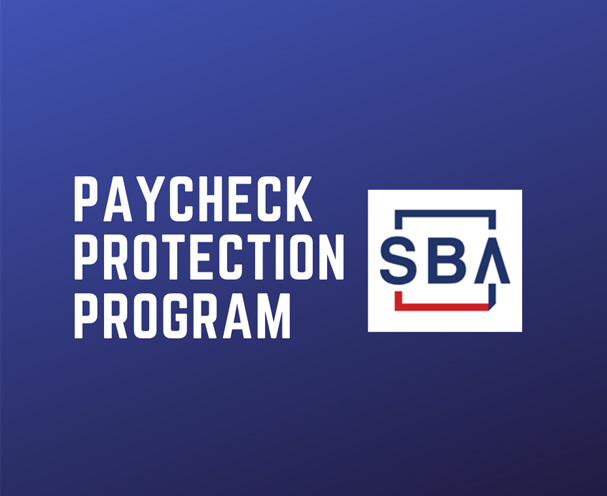1. Do not ask your employees if they have COVID-19.
While you can visually see an employee coughing, sneezing, and generally feeling sick at the office and you are right to ask an employee to go home under these circumstances- remind your management team that they cannot ask an employee if they have a specific illness. The Americans with Disabilities Act (ADA) restricts the level of questions that an employer can make into an employee’s medical conditions, and you do not want to run afoul of the ADA. You can however ask the following general health questions of an employee- (1) Are you feeling alright?, (2) Are you okay to continue to work?, or (3) Would you like to go home and get some rest?
2. Can I ask an employee to get tested for COVID-19?
No, the ADA prevents an employer from requiring an employee get a medical exam unless (1) the employer can demonstrate the medical exam is job-related, or (2) the employer has a reasonable belief the employee poses a direct threat to the health & safety of the employee or others THAT CANNOT BE ELIMINATED OR REDUCED BY REASONABLE ACCOMMODATION (reasonable accommodation in this case being sending the employee home and preventing their coming in contact with other employees).
3. You cannot take an employee’s temperature to determine if they may be infected with COVID-19.
Again the ADA comes into play, as taking an employee’s temperature or performing any other diagnostic falls under the category of a “medical examination” under the act. Its best to leave the medical exams to the doctors and other healthcare practitioners.
4. Do I have to allow an employee to wear a face mask to work?
No. The Centers for Disease Control and Prevention (CDC) advises against wearing a face mask unless an individual is sick with symptoms of the virus or is taking care of someone with the virus at home or in a health care setting.
5. One of your employees tested positive for the COVID-19, now what?
In the case you have an employee inform you that they have tested positive for the virus, it is important to send the employee AND ANY OTHER EMPLOYEES WHO THEY WORKED CLOSELY WITH home for a 14-day self-quarantine period to try and prevent further spread of the virus. Remember again that the employee’s medical diagnosis is protected health information, and that you as an employer cannot disclose their positive test results to the rest of your staff. You cannot disclose the name of the employee to anyone else at your company or you risk running afoul of confidentiality laws. Employers should inform their employees that possible exposure has occurred in the workplace without disclosing any identifying information about the individual who tested positive.
It is very important if the employee who tested positive for the virus was physically at your work site, that you take deep cleaning measures to eliminate the potential threat from all surfaces that the employee was in close contact to. If you work in a shared office space arrangement, contact management of the space and ask them if they can deep clean any shared spaces that the individual might have been in contact with.
After taking the measures above, it is imperative that you report the positive test to your local OSHA office which is attempting to track all of the COVID-19 cases. For example, positive test cases in South Florida should be reported to the Region 4 Offices of OSHA in Atlanta, GA-
Region 4
Atlanta Regional Office
(AL, FL, GA, KY*, MS, NC*, SC*, TN*)
Sam Nunn Atlanta Federal Center
61 Forsyth Street, SW, Room 6T50
Atlanta, GA 30303
(678) 237-0400 (678) 237-0447 Fax
If you are in another region of the country, you can find your OSHA region and contact information in the OSHA “Guidance on Preparing Workplaces for COVID-19” job aid.


 Your employee investigations should be executed quickly, your interviews well-planned and remember the 5 Ws. Your employees must perceive you as unbiased and objective in the performance of reviewing these claims- or you will not get the information or cooperation you need from them in order to get to the bottom of the situation. It almost goes without saying, but document every step along the way of your investigations and it helps if you always assume that the matter will end up in court.
Your employee investigations should be executed quickly, your interviews well-planned and remember the 5 Ws. Your employees must perceive you as unbiased and objective in the performance of reviewing these claims- or you will not get the information or cooperation you need from them in order to get to the bottom of the situation. It almost goes without saying, but document every step along the way of your investigations and it helps if you always assume that the matter will end up in court. According to
According to  There are numerous factors that can’t be ignored related to social media – productivity, privacy, legal issues, the reputation of your organization – just to name a few. HR Professionals should know that workplace culture is largely driven by conversations taking place on social networking sites, not at the water cooler. Encouraging employees to interact on networking sites can improve workplace culture and the image of the entire company. The plan should be to use social media to your advantage.
There are numerous factors that can’t be ignored related to social media – productivity, privacy, legal issues, the reputation of your organization – just to name a few. HR Professionals should know that workplace culture is largely driven by conversations taking place on social networking sites, not at the water cooler. Encouraging employees to interact on networking sites can improve workplace culture and the image of the entire company. The plan should be to use social media to your advantage.
 While employers don’t normally require their employees to attend a holiday party, many strongly encourage it, creating an expectation of attendance. If you’re one of those organizations, we suggest you reconsider the message on your holiday party invitation for two reasons. The first is related to liability and the second is related to wage and hour laws.
While employers don’t normally require their employees to attend a holiday party, many strongly encourage it, creating an expectation of attendance. If you’re one of those organizations, we suggest you reconsider the message on your holiday party invitation for two reasons. The first is related to liability and the second is related to wage and hour laws. discuss the holiday, and how some in the workplace might find the holiday objectionable due to their religious beliefs. For this reason, Managers should communicate to their teams that it is perfectly okay NOT to participate in dressing up to work on that day, and if an employee requests to work from home and it won’t impact their work- this reasonable accommodation should be made. Any costume contests, office décor contests, parties, or activities related to the holiday should be communicated to staff as “voluntary” and no employee should be forced to partake.
discuss the holiday, and how some in the workplace might find the holiday objectionable due to their religious beliefs. For this reason, Managers should communicate to their teams that it is perfectly okay NOT to participate in dressing up to work on that day, and if an employee requests to work from home and it won’t impact their work- this reasonable accommodation should be made. Any costume contests, office décor contests, parties, or activities related to the holiday should be communicated to staff as “voluntary” and no employee should be forced to partake.
 The idea that you could be sued by someone you’ve simply interviewed as a prospective employee may seem absurd, but employer liabilities begin before the employment relationship begins. Prospective employees can claim that you failed to hire them for an illegal reason such as their age or gender. Even though this claim may be hard to prove, it can still result in costly legal fees for your business.
The idea that you could be sued by someone you’ve simply interviewed as a prospective employee may seem absurd, but employer liabilities begin before the employment relationship begins. Prospective employees can claim that you failed to hire them for an illegal reason such as their age or gender. Even though this claim may be hard to prove, it can still result in costly legal fees for your business.